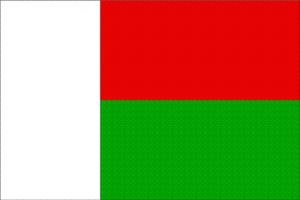Difference between revisions of "Language/Plateau-malagasy/Vocabulary/Introducing-Yourself"
m (Quick edit) |
m (Quick edit) |
||
| Line 1: | Line 1: | ||
<span pgnav> | |||
{| class="wikitable pg_template_nav" | |||
|[[Language/Plateau-malagasy/Vocabulary/Basic-Greetings|◀️ Basic Greetings — Previous Lesson]] | |||
|[[Language/Plateau-malagasy/Grammar/Nouns-and-Gender|Next Lesson — Nouns and Gender ▶️]] | |||
|} | |||
</span> | |||
{{Plateau-malagasy-Page-Top}} | {{Plateau-malagasy-Page-Top}} | ||
| Line 99: | Line 106: | ||
{{Plateau-malagasy-Page-Bottom}} | {{Plateau-malagasy-Page-Bottom}} | ||
<span links></span> | <span links></span> | ||
<span pgnav> | |||
{| class="wikitable pg_template_nav" | |||
|[[Language/Plateau-malagasy/Vocabulary/Basic-Greetings|◀️ Basic Greetings — Previous Lesson]] | |||
|[[Language/Plateau-malagasy/Grammar/Nouns-and-Gender|Next Lesson — Nouns and Gender ▶️]] | |||
|} | |||
</span> | |||
Revision as of 22:32, 2 April 2023
| ◀️ Basic Greetings — Previous Lesson | Next Lesson — Nouns and Gender ▶️ |
In this lesson, you will learn how to introduce yourself in Plateau Malagasy. By sharing your name, age, and hometown, you will be able to connect with Malagasy people and start conversations. We will also discuss cultural norms related to introductions in Madagascar, so you can avoid common mistakes and show respect to your hosts.
Take some time to dive into these other pages after completing this lesson: Days of the Week & Family Members.
Vocabulary
Basic Phrases
First, let's learn some basic phrases you can use when introducing yourself in Plateau Malagasy:
| Plateau Malagasy | Pronunciation | English |
|---|---|---|
| "Manahoana" | /maˈnaħ(w)ana/ | Hello (general greeting) |
| "Salama" | /sɑˈlamə/ | Hello (formal greeting) |
| "Tonga soa" | /ˈtuŋga ˈsu/ | Welcome |
| "Inona ny anaranao?" | /ˈinun nʲanˈaranaw/ | What's your name? |
| "Anaranao dia inona?" | /anˈaranaw ˈdʲa inuˈna/ | What's your name? (more formal) |
| "Isika dia ..." | /iˈsikə ˈdʒa/ | We are... |
| "Misava tsara, mazotoa" | /misaˈva ˈtsarə məˈzutwə/ | Fine, thank you |
| "Tsy misy fahita anao intsony" | /tsimiˈsʲ faˈhita aˈnaw inˈtsun/ | Long time no see |
| "Mazava tsara" | /məˈzavə ˈtsarə/ | Good morning (literally: "good light") |
| "Tsara ny andro" | /tsarə ˈn(and)ru/ | Have a good day |
| "Tongava soa" | /tuŋˈgavasw/ | Goodbye (when leaving) |
| "Veloma" | /veˈlu(m)ə/ | Goodbye (when staying) |
Some of the most important phrases to memorize are "Manahoana" and "Salama," which mean "hello." "Manahoana" is a more casual greeting, while "Salama" is more formal and respectful. Depending on the context, you may want to use one or the other.
When asking someone their name, you can say "Inona ny anaranao?" or "Anaranao dia inona?" The first one is more casual and can be used with friends or people of similar age. The second one is more respectful and is better suited for formal situations or when addressing elders.
To introduce yourself in Plateau Malagasy, you can say "Isika dia ..." followed by your name, age, and hometown. For example, "Isika dia Jean, miara-dia eo amin'ny 30 taona, avy any Antananarivo" means "We are Jean, 30 years old, from Antananarivo."
Lastly, if you haven't seen someone for a while, you can say "Tsy misy fahita anao intsony," which means "Long time no see." This phrase shows that you still remember the person and value their relationship.
Cultural Insights
In Madagascar, introductions are an important part of social interactions. People often ask for each other's names and family backgrounds, as well as their professions and interests. In rural areas, people may also ask about each other's ancestors and the region they come from.
When meeting someone for the first time, it's important to show respect by using formal phrases like "Salama" and "Anaranao dia inona." You should also avoid using first names unless you are specifically invited to do so. Instead, use titles and honorifics such as "Monsieur" for men or "Madame" for women, followed by the surname.
If you are unsure about the social norms in a particular situation, it's always better to err on the side of caution and show more respect than less. This can help you avoid offending your hosts and build positive relationships.
Practice
Now, let's practice introducing yourself in Plateau Malagasy. Use the phrases and vocabulary you just learned to create your own introduction. You can either write it down or record yourself saying it out loud.
Here is an example introduction:
"Manahoana, isika dia Sarah sy miara-dia eo amin'ny 27 taona, avy any Fianarantsoa. Inona ny anaranao?" (Hello, we are Sarah and friends, 27 years old, from Fianarantsoa. What's your name?")
You can also try to adapt your introduction to different situations, such as formal vs. informal or meeting elders vs. peers. This will help you become more confident in your ability to communicate in Plateau Malagasy and connect with Malagasy people.
Other Lessons
- Colors
- Fruits
- Express Surprise
- Numbers and Counting
- Relationships and Emotions
- Days, Months, and Seasons
- Animals
- Geography
- Health
- How to Say Hello and Greetings
Template:Plateau-malagasy-Page-Bottom
| ◀️ Basic Greetings — Previous Lesson | Next Lesson — Nouns and Gender ▶️ |
